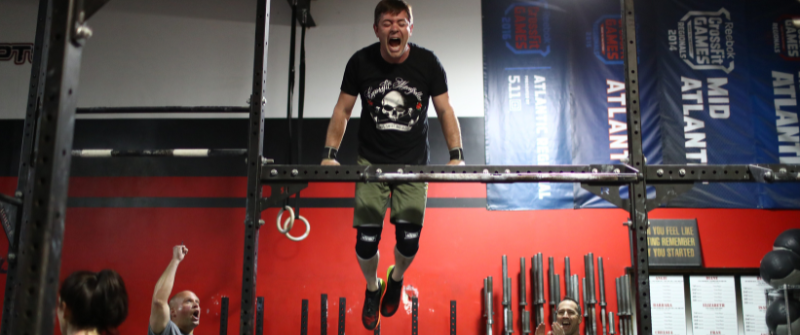Personal training is a rewarding and dynamic profession, helping clients achieve their fitness goals and improving their well-being. However, like any profession, personal training is not without its risks. Accidents, injuries, and legal claims can pose significant threats to CrossFit Trainers, who provide personal training and operate their own businesses. This is where professional liability insurance comes into play, offering protection and peace of mind.
In this comprehensive guide, we will delve into the importance of professional liability insurance for CrossFit trainers and provide valuable insights to help you select the best coverage for your needs.
What Is Professional Liability Insurance?
Professional liability insurance provides coverage from financial losses for wrongful acts like neglect, errors, omissions, misstatements or misleading statements that occur as a result of professional instruction. Professional liability insurance for CrossFit trainers extends coverage in the event of a legal claim related to those wrongful acts and can protect your business from legal fees, settlements, and damages.
Why Do Personal Trainers Need It?
Even with the best intentions, accidents can happen, and clients may sustain injuries as a result of a CrossFit trainer’s professional instruction, programming or advice. Professional liability insurance is essential for trainers because it offers the following five critical benefits:
- Financial Protection: Without insurance, CrossFit trainers may have to cover these expenses out of pocket, potentially leading to business interruption or financial ruin.
- Reputation Preservation: Dealing with a legal dispute can be emotionally and professionally challenging. Professional liability insurance can help preserve CrossFit trainer reputations by addressing the situation efficiently and responsibly.
CrossFit trainers can benefit from several types of insurance coverage to protect their business and mitigate risks. Here are some essential types of fitness insurance for personal trainers:
General Liability Insurance: General liability insurance provides protection in case of third-party claims for bodily injury, property damage, or personal injury. It can cover accidents that occur on your premises.
Equipment Coverage: This protects your fitness equipment, including weights, machines, and exercise tools, against theft, damage, or loss, even when you use them outside of your primary location.
Product Liability Insurance: If you sell fitness-related products which you have manufactured, mixed, relabeled or repackaged, such as supplements or exercise equipment, this insurance protects you in case someone is harmed or injured due to a defect or issue with the products.
Selecting the right combination of these insurance types depends on the specific nature of your CrossFit training business, its size, and the services you offer. It’s advisable to consult with an insurance professional or broker who specializes in fitness insurance to assess your risks and tailor a policy to suit your needs.
Tips for Selecting the Right Coverage
When selecting the right professional liability insurance coverage, personal trainers should consider several factors to ensure their needs are adequately met. Here are the key considerations you should focus on when choosing insurance coverage as a CrossFit trainer.
Assess Your Risk Profile
CrossFit trainers must evaluate their unique risk profile to determine the appropriate coverage. Factors to consider include:
- Equipment used and their potential risk factors
- Client demographics and fitness levels
- Training facility location and the corresponding liability laws
- Nature of the training provided (e.g., high-intensity training, specialized training for medical conditions)
It’s important to develop a thorough understanding of your specific risks to ensure you select a policy that provides sufficient coverage for your business.
Coverage Limits and Deductibles
Coverage limits represent the maximum amount the insurance policy will pay for a single claim or aggregate claims during the policy term. When selecting coverage limits, CrossFit trainers should consider:
- The potential financial impact of a legal claim on their business.
- The cost of legal representation and potential settlements.
- The average cost of claims in their specific sector of the fitness industry.
Policy Exclusions
Most insurance policies include exclusions, which are circumstances or incidents not covered by the policy. CrossFit trainers should carefully review these exclusions to understand what is not covered. Common exclusions in professional liability insurance for trainers often include:
- Intentional misconduct or illegal activities.
- Claims arising from contractual disputes.
- Claims involving sexual misconduct or harassment.
- Claims related to dishonest or fraudulent behavior.
Understanding the policy’s exclusions is essential to avoid potential surprises when filing a claim.
Licensure and Certification Requirements
Licensure and certification requirements for trainers vary by state and locality. Some jurisdictions may have specific prerequisites for practicing as a personal trainer, including obtaining certain certifications or licenses. Trainers should ensure they meet all legal requirements to maintain eligibility for insurance coverage.
Conclusion
Professional liability insurance is a fundamental safeguard for CrossFit trainers, offering protection and peace of mind in a profession filled with inherent risks. Selecting the best coverage requires careful consideration of your unique risk profile, an evaluation of policy types, and an understanding of the claims process. By assessing the cost factors, researching providers, and exploring group policies through professional associations, and trainers can ensure they have the coverage they need.
Additionally, CrossFit trainers should remain informed about legal and regulatory requirements, create comprehensive legal contracts with clients, and understand the importance of adherence to industry standards. Through these measures and the examples of success stories and lessons learned, trainers can navigate their profession confidently and responsibly, knowing they have a safety net in place in case of unexpected incidents or legal claims.
Ultimately, professional liability insurance is not just a legal requirement; it’s a critical aspect of ensuring the long-term success and financial stability of fitness training businesses.

